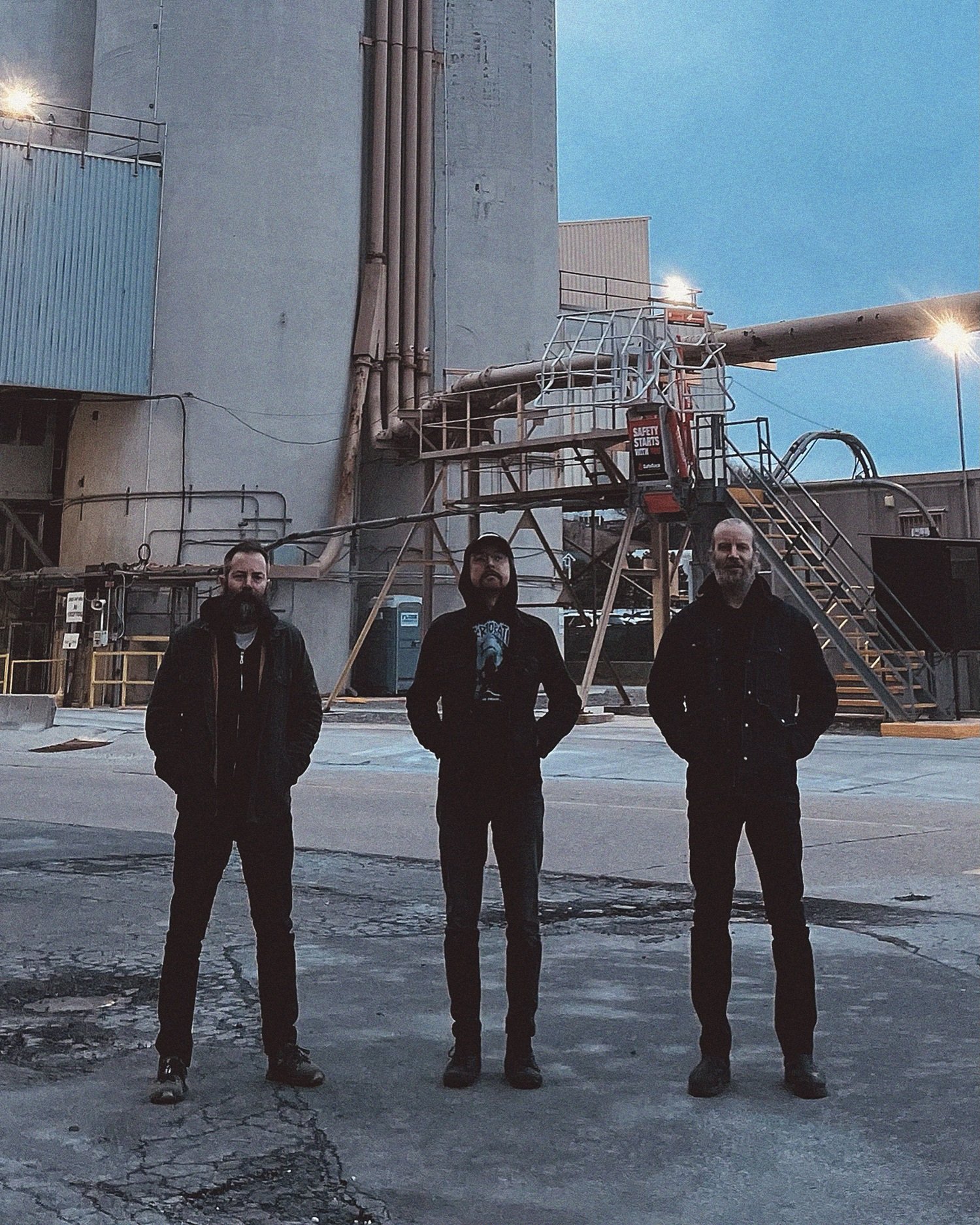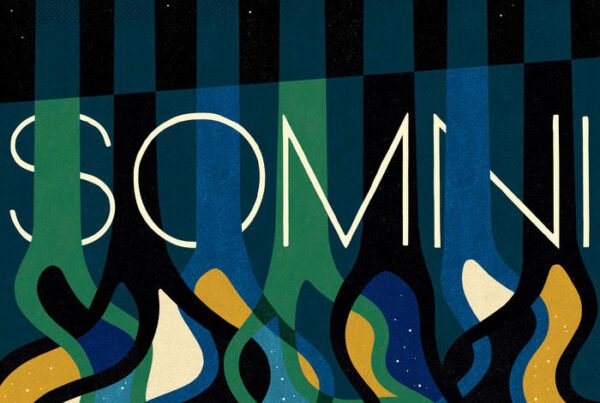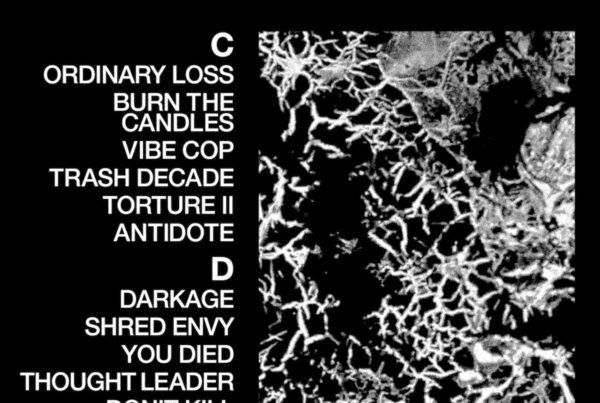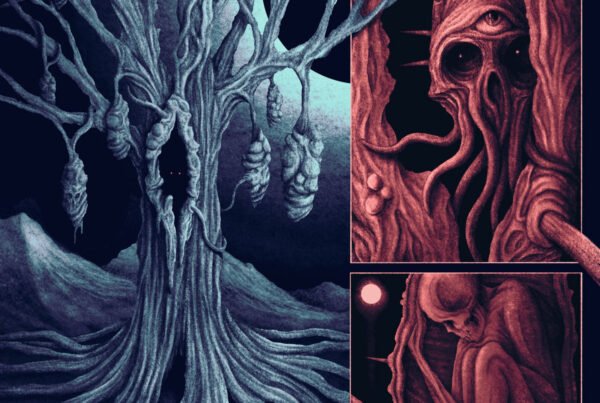SUMAC shove post-metal howling further into experimental territory with The Healer.
Release date: June 21, 2024 | Thrill Jockey Records | Bandcamp | Instagram | Spotify
The announcement that post-metal titans ISIS were disbanding a little over a year after the release of 2009’s well-received Wavering Radiant was like a knife in the heart. I’d been following the band’s journey since the release of 2004’s breathtakingly phenomenal Panopticon (one of my all-time top-5 favourite albums), and its fantastic 2006 follow-up In the Absence of Truth onward, and at the time the decision felt way too soon. But the sting was taken away first by learning that it was a mutual, conscious decision the band made to avoid growing stale, having felt they’d said all they had to say, and also by what came next for its members musically.
Bassist Jeff Caxide, drummer Aaron Harris, and guitarist Bryant Clifford Meyer would go on to form Palms with Chino Moreno, releasing a solo album that was more than just three-fifths of ISIS with the voice of the Deftones, and an absolute banger in its own right. Guitarist/vocalist Aaron Turner had already been involved in a number of bands on the side – primarily Old Man Gloom, but also Lotus Eaters and House of Low Culture – and after the demise of ISIS, he was looking for an outlet to write something heavier than he’d previously created.
After writing the framework for a few songs, he reached out to Kurt Ballou to see if the Converge guitarist could recommend a drummer who would fit the music he was writing. Ballou, who had just recorded Bloodmines for the Canadian metallic hardcore band Baptists, suggested Nick Yacyshyn. Turner and Yacyshyn clicked and were joined in the studio by Brian Cook of Russian Circles, and SUMAC took its first (solid) steps. Their 2015 debut EP, The Deal, felt largely fully formed, and was followed a year later by the stellar What One Becomes; both were exercises in making crushingly heavy yet exploratory post-metal, but it was in 2018 that things seemingly shifted for the group.
Enter Keiji Haino, who it would be remiss of me not to mention before we go any further. The Japanese musician is a well-known noisemaker in his own right, and an odd choice (at least on paper) to collaborate with a band largely rooted in the metal world. But their first of three collaborations (so far), 2018’s American Dollar Bill – Keep Facing Sideways, You’re Too Hideous to Look at Face On, received widespread acclaim from music critics, and, more relevant here, seems to have influenced SUMAC‘s writing on their releases since; Haino’s improvisational tendencies seem to have rubbed off on the post-metal trio, encouraging them to take increasingly experimental steps with each successive release.
Released in the same year as their first collaboration with Haino, Love in Shadow was the first example of the band incorporating more improvisation into their music than they had before (as a side note, the album’s opener, “The Task,” shows why Kurt Ballou recommended Nick Yacyshyn, in my humble opinion), and 2020’s May You Be Held only reinforced that.
And so, we arrive at what could almost be a logical conclusion, a zenith of that notion, with The Healer.
Album opener “World Of Light” likes to take its time getting going; like an ancient, powerful beast that awakens from hibernation, unconcerned by your presence. It’s a jagged, swirling, sinuous affair, more akin to a high-quality capture of a live improvisational set than a meticulously crafted, rehearsed and performed studio recording (and to some extent, it may be). Here, Cook’s bass rumbles like biblical thunder, Yacshyn’s drumming is cacophonous and freewheeling, Turner’s guitar screeches, roars, drones, and intones a gamut of emotions, and his vocals range from deep-throated growls to oddly high-pitched strangled screams. Clocking in at a hefty 25 minutes, the track is almost an album in itself.
As much as I hate to make the comparison, “Yellow Dawn” opens with a drum and organ combo that would sound right at home on an ISIS album, but it’s not long before a very SUMAC riff sneaks in and the track takes off. Around the seven-minute mark, Cook really lets loose, his bass almost snarling behind a harsh, TV-static riff. The twelve-minute running time is barely noticeable as the band melds all the twists and turns into one another.
“New Rites” is built around an earworm of a chugging riff, full of rumble and roar, that morphs into a maelstrom of pounding drums and furious guitar and bass before giving way to a final act that is more on the exploratory side. Here the tempo slows down drastically and the music is given the space to resonate, each note to linger in the listener’s mind.
The album is concluded with another song that runs over 25 minutes and proves to be as much of an oxbow as the album opener and could also be an album in its own right. Unlike the first track of the record, “The Stone’s Turn” starts at a fast pace, grabs you between its teeth and throws you right into it without wasting any time. There’s a section halfway through that almost feels like a post-metal nod to Pink Floyd‘s “Echoes,” and there are times throughout the song when it just feels like messy noise, but damn, this is some of the most beautifully produced, well-crafted, and exciting messy noise I’ve heard in a long time. The last five minutes of the song follow a very SUMAC sludgey, dirgey, chugging riff that builds to a crescendo and ends the record on a glorious note.
The more conventional passages of music on The Healer are dictatorially heavy, and make no mistake, there are plenty of those moments, but having said that, the more exploratory side of the music may weed out those without the patience for it. Hell, part of me misses the more straightforward heaviness of past records like the aforementioned What One Becomes, but at the same time it has been an interesting journey to follow the band over the past few years. SUMAC have truly expanded the improvisational lengths they are willing to explore; this record carries that torch further than before. While some may feel that the band is just making shit up as they go, to me these sections actually serve as a demonstration of how in sync the trio is as a unit. It was also exciting to see the direction that post-metal can be pushed in by Turner and company while still holding its shape, especially considering that he and his former bandmates helped define the genre. A thrilling album delivered by such capable hands.






